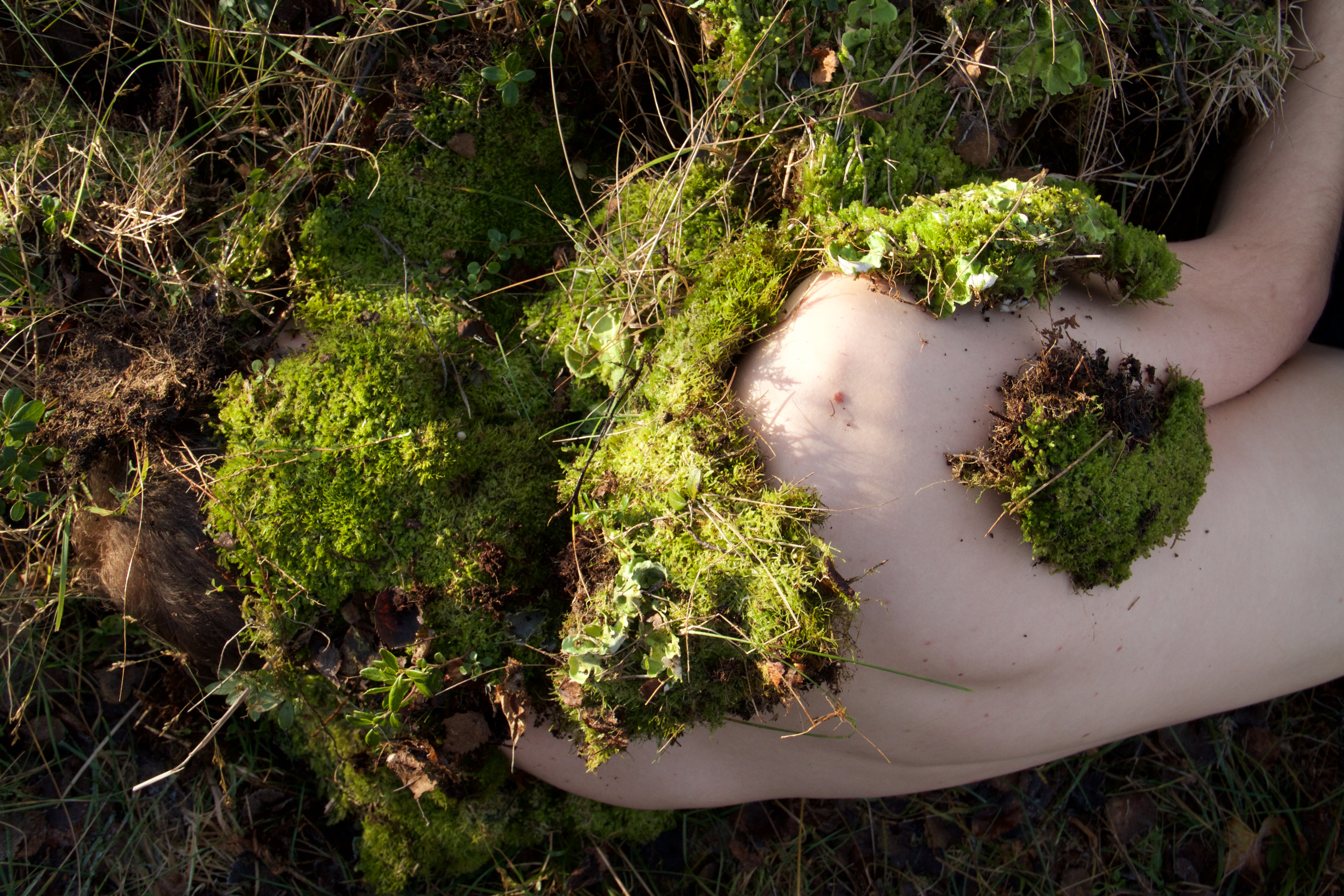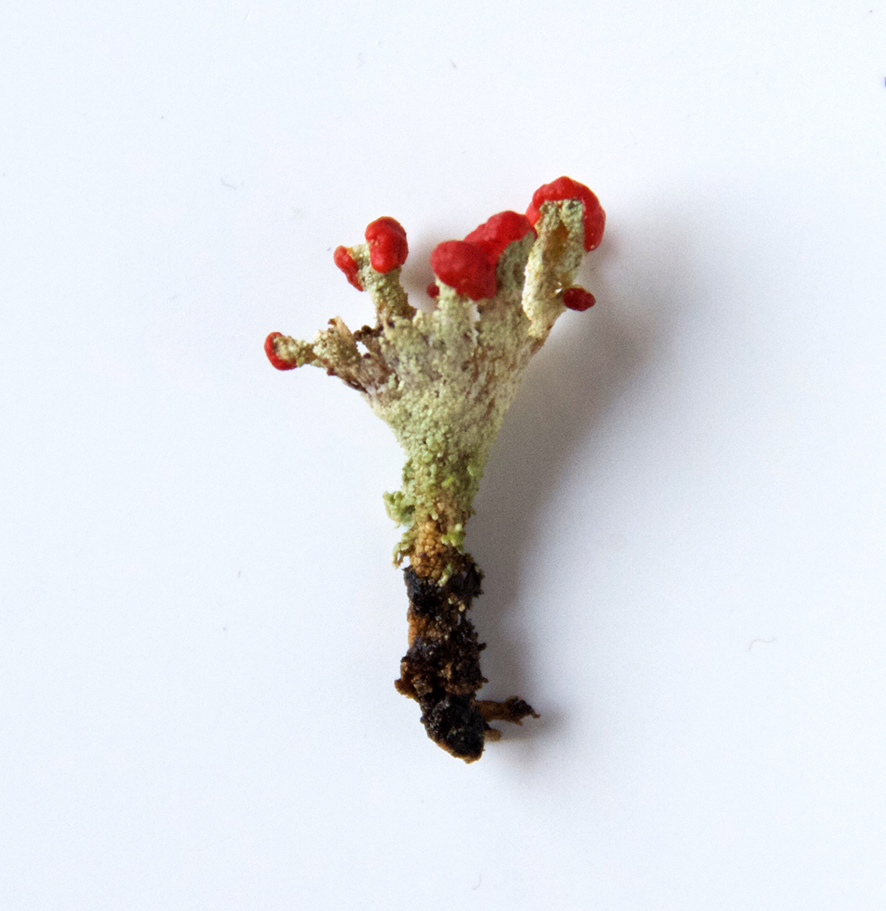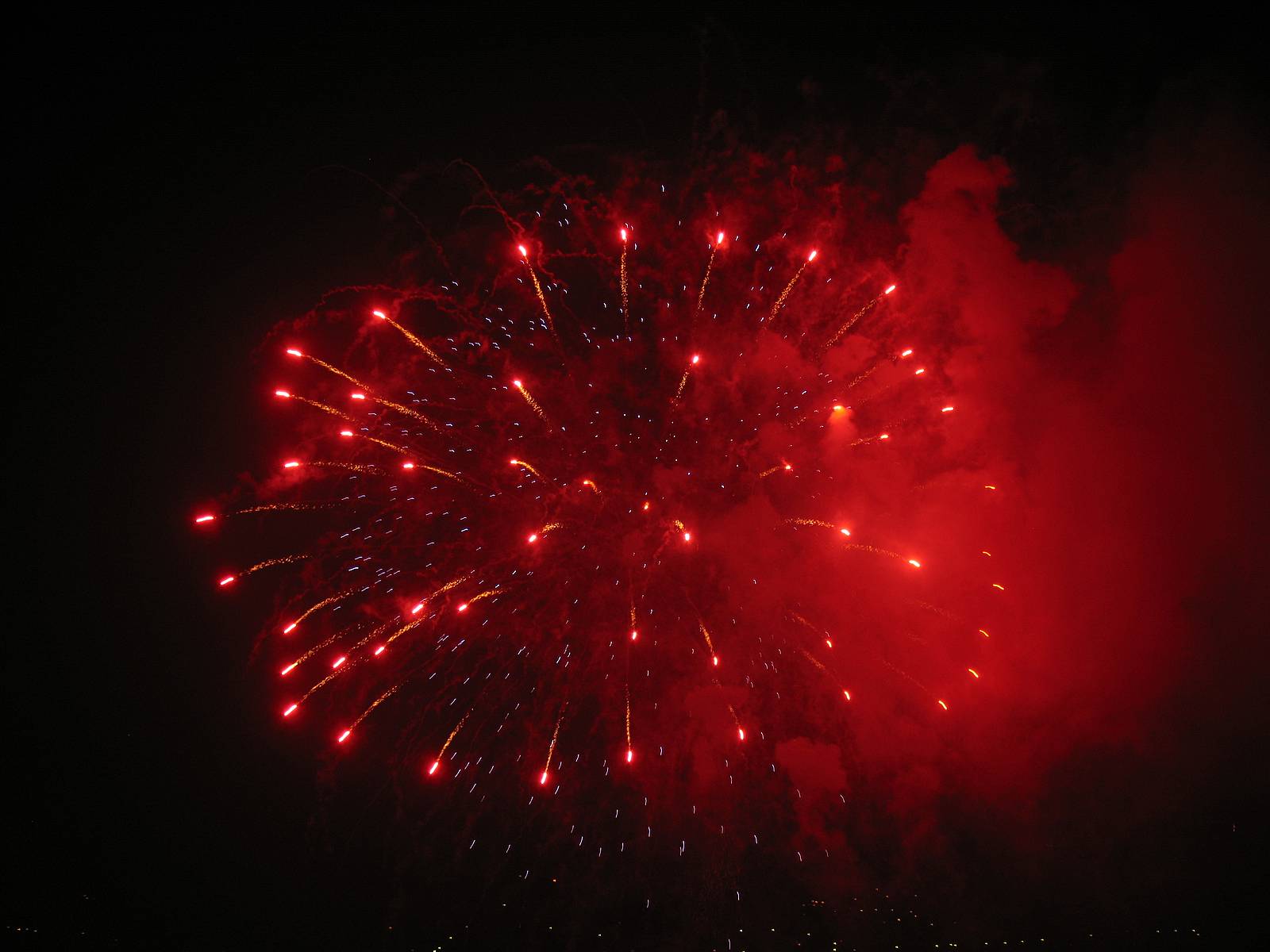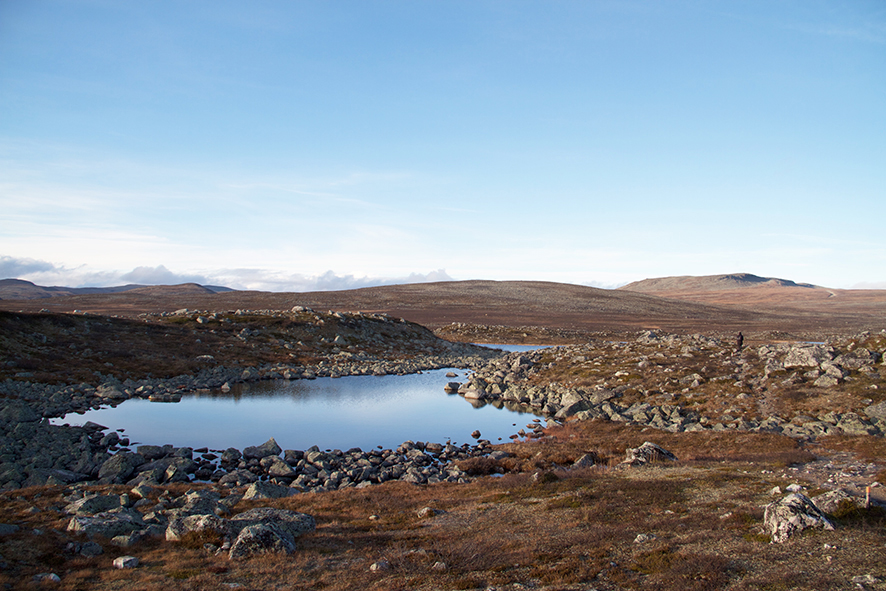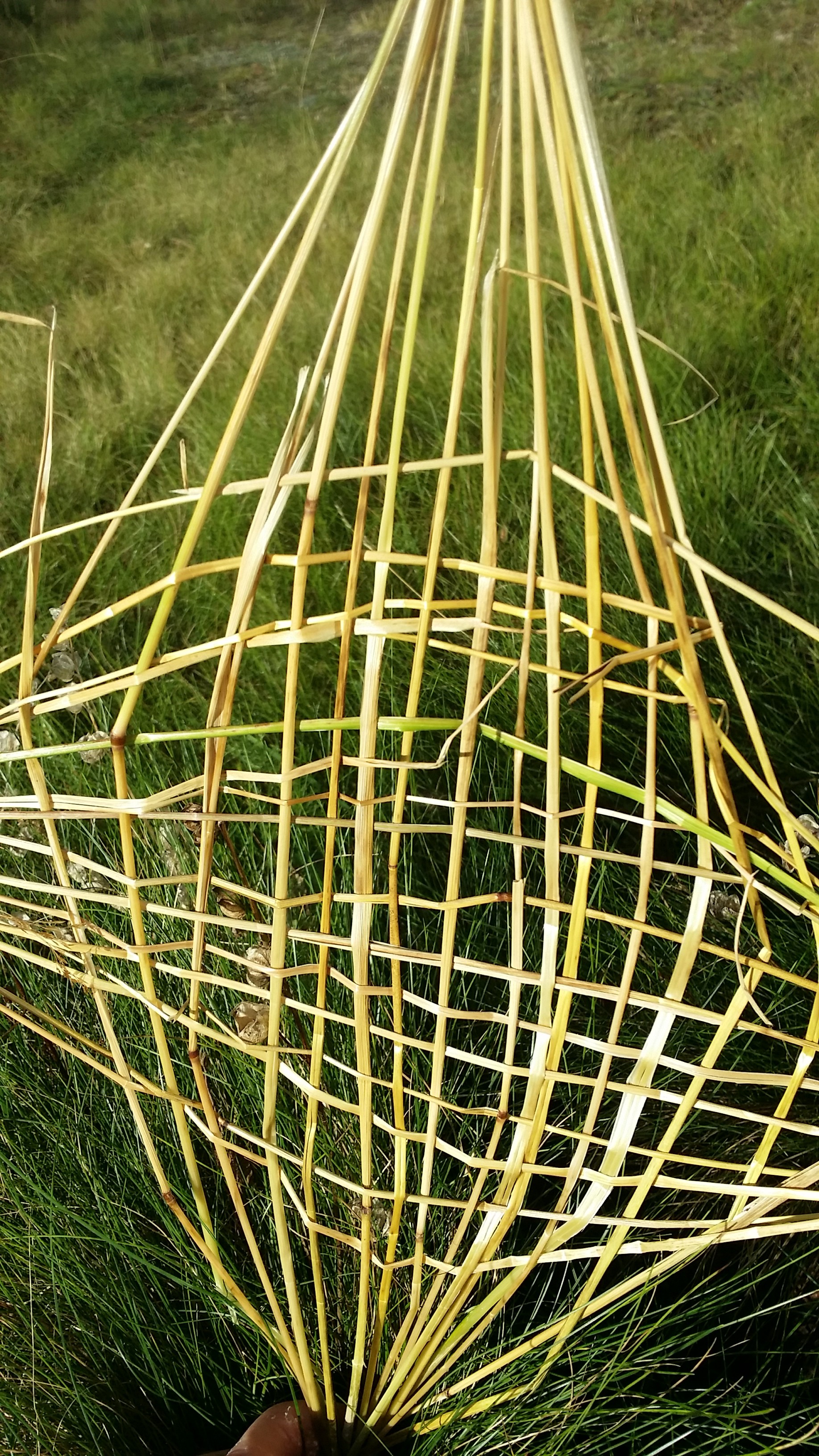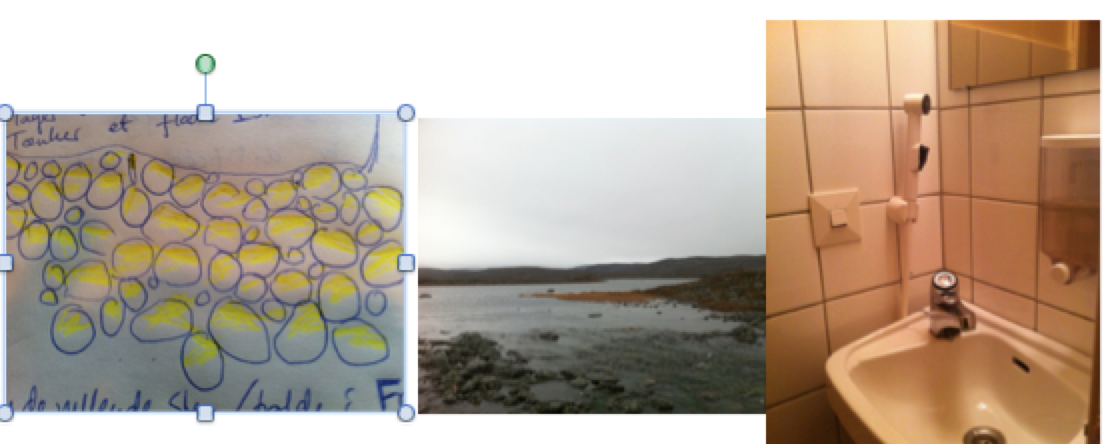Our group of seven people arrived at Kilpisjärvi Biological Station on September 27. As a part of the Ars Bioarctica residency program we proposed to engage with a choreographic research on impact of a post-anthropocentric standpoint in relation to what becomes central in a choreographic work. The group is formed by dancers, dramaturg, lighting designer, composer and computer scientist and my self as a choreographer. Our focus during the residency was on human interaction with otherness. Each member of the group has in the following posted material based on their reflections on this subject during the stay at the Biological Station in Kilpisjärvi. -----------------------------------------------------------------------------------------------------------------------------------------
human - vegetation - scale project
Tina Tarpgaard, Choreographer
As a choreographer i am presently concerned with choreography as a space of interaction with otherness. Part of my journey has been to observe our bodies on a microscopic scale revealing the biological entity we call “our body”, to be a living buzz of cells, viruses, fungi and bacteria. As Donna Haraway expresses it: “Human genomes can be found in only about 10 percent of all the cells that occupy the mundane space I call my body; the other 90 percent of the cells are filled with the genomes of bacteria, fungi, protists, and such, some of which play in a symphony necessary to my being alive at all. […] I am vastly outnumbered by my tiny companions.” This radical puncture of the sense of autonomy might challenge our sense of “self” and identity, but it also makes way for higher awareness of interconnectivity and interdependence between living beings. It also puts critical questions to the western cultural tendency to assume the human to be “above” other species and opens for artistic speculations in what a redefinition of this very anthropocentric viewpoint means. In a performative context this has lead to working with the decentering of the human performer - this by engaging with bodies of different species an in different scales, braking the fixation to the meso viewpoint that vastly dominates the performing arts. On this background i engaged in the Ars-bioarctica residency with recoil performance group. The embodied experience of the vast landscape and vegetation, taken in through the objective of my physical existence being a multiplicity of beings in it self, lead me to reconsider vegetation, human and scale. Here the root of the word “Vegetation” in the latin language: Vegeto = “enliven” or “to move”, brought for me a new sense of the interspecies relation between human and plant, and the scale encounter of human vegetation and landscape. An aesthetic journey but also a contemplation of our relationship to vegetation. In the english language the word Vegetable is of highly negative meaning when applied to a human, reflecting an assumed hierarchy between living beings. In the attempt to contradict the hierarchical thinking and in the context of interaction with otherness as well as decentering the human, the encounter between human hair and arctic landscape was a physical and even emotional experience. As my colleague Till Boverman noticed when we examined our skin though microscope, it is almost an experience of violated privacy to expose what is usually an invisible feature of your selves this way. This emotional reaction manifesting my feeling of self, became my anchor point in a venture in to examining the visuals of arctic vegetation and human body.What can i say is truly me? Can i define a surface that envelopes the presence of my identity?
I wonder if identity exits in the form we know it in the future?
(a recycling of questions that appeared within the group while working with bacteria in previous research)
--------------------------------------------------------------------------------------------------------------------------------------------The Colour-palette Project
Sam Denton, Dancer
Hilde I. Sandvold, Dancer

Following human need to organize and orchestrate nature.
Human as another shade of nature.
Questioning what is artificial vs nature.
The human desire or need to live among artificial properties. Things that make life easier
for us on the short term. The plants already died the day after.
Arrangement of colour.
Human as another shade of nature.
We tried to create a non-recognizable bodyscape, where the skin become more of a
morphable material. We wish to go beyond the skin-surface and create an imagined
exterior.
Issues with the colour-palette project:
Our western culture makes us go out and rip things up, just to color-coordinate them, with
no further knowledge of what or who they are. It did not ask to be put there, it could not
say «enough is enough». There is a lack of communication between the two, or many, of
us.
---------------------------------
Trampling impact-project
«seeing the ground as a living being»
As we walk through the woods, or the fields, the weight of our bodies has a life changing
impact on what we put it upon. We imagined human as part of the ground, and considered
the changes it would have on our perception of our own weight on other living beings.
In the reflection-process, key words were scale and the relation between culture/nature, and our
western way of seeing them as different things.
You kill a mosquito as an immediate reaction with no further consideration. As the living being
grows bigger, so does the emotional impact. Is this a helpful system of response?
As dancers, we are attracted to research the term «trampling-impact» also because of its physical
implications. We exchange information with the nature through interchanging weight.
--------------------------------------------------------------------------------------------------------------------------------------------
Reflections
Hilde I Sandvold, Dancer
Everything is in nothing. Nothing is in everything. Every single unit contains everything. We
only need that one, and nothing else. But, it is nothing without everything, and everything
is somewhere else without it.
---------------------------------------------------------------------------------------------------------------------------------------------
Exercising Goethean observation method at Kilpisjärvi 1st - 4th October 2016
Minna Tiikkainen, lighting designer
From http://www.lancaster.ac.uk/users/philosophy/awaymave/405/wk8.htm “Goethean observation as phenomenology Johann Wolfgang von Goethe, although better known for his poetry and plays, spent the years from 1777 until his death in 1832 engaged in scientific exploration. His work on science includes investigations in the areas of: geology, meteorology, osteology, botany and the study of colour. Goethe’s study of plants was unusual at the time, because he did not use dead herbarium samples, but studied the plants in their environments. This gave him particular insights into how the plant adapts to its environment and from there to an appreciation of the plant as an adapting organism. The distinctive features of Goethes method include: observing with patience and rigor; deepening a sense of wonder to the world; using sensual and emotional awareness to experience phenomena as fully as possible; attending to connections between phenomena; acknowledging an ethical dimension to the practice of science. The four stages are as follows: 1. Exact sense perception; 2. Exact sensorial fantasy; 3. Seeing in beholding; 4. Being one with the object.” 1.EXACT SENSE OF PERCEPTION Factual -object is relatively small, 2-2,5 cm high, 0,6 cm wide -conical body shape, asymmetric upper part -top part is spreading out and divides into eight clearly separate parts or branches -branches vary in size -inner centre part is a crater like form -lower part is clearly different in structure and texture being more complex and uneven -mid part is rough and grainy -in the end of the upper branches there are rounder and smoother parts -the rounder shapes on top are strong and warm red in colour maybe mix of cadmium and iron red -the actual cone that looks like the main body is light blue-green -lower part is dark brown 2. EXACT SENSORIAL FANTASY Include time and history but stay objective This object looks prehistoric because of its shape is almost alien like. Red colour on the tips of the object makes me think of danger and blood. Since the main body is opposite in colour, it highlights these red ending points. These red dots are also highly sexual. Asymmetry of the object together with the colour makes me also think an explosion frozen in time and space. Depending of the angle you look at the object, associations change. From side it looks like a small hand. Blood in your hands or maybe just nail polished fingertips. From under these branches could be small toes of a greenish creature. From top it could be a mouth. It has some similarities to mushrooms and also sea vegetation, like a seaweed. I also associate the shape to nerves or a nerve sell. I picked it up to take it with me and tried to water it to keep it live. It seems light and water is enough for it, which makes me think it has to have very basic needs. It does have a strong earthy smell which I notice only when it has been in my hands. When I hold this object I sense both fragility and strength at the same time. It seems it could survive without energy for very long time. It obviously can handle lots of weight since when pressing it’s flexible body, the shape does not change nor brake but returns to its original position. 3. SEEING IN BEHOLDING Try to reverse, withdraw, listen. How does the object see you? From the point of the object I am huge colourful mass that moves and hoovers around it. I also have opposite surface colour than it; light pinkish and beige. My top branches are very thin divided into thousands fragile and long threads that are brown in colour. I am similarly uneven and rough in my surface but my texture is looking smoother and perhaps less grainy. I have less bigger branches, that yet divide into 5 separate, shorter branches. These parts are situated both up and down of my centre body. I am mobile and can move using my branches. I try to communicate with the object by blowing some air out and by making some sounds, but the object seems not to respond back. 4. BEING ONE WITH THE OBJECT Mental spiritual This object is like an antenna that reaches towards the sky. Are the red dots some sort of receptors? I put my eyes very close to the object and the harmoniously opposite colours are vivid and surprisingly communicate calmness rather than aggression. This object will not move from its place unless I pick it up and therefore slowly “kill it” and that makes me feel very free and powerful and very stressed at the same time. Will it sense the change of environment and its evident disappearance?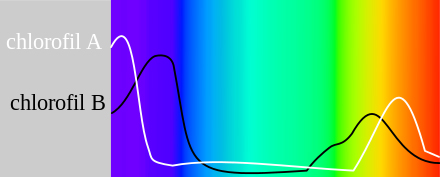
---------------------------------------
Landscape - Sky Project
 ---------------------------------------------------------------------------------------------------------------------------------------------
---------------------------------------------------------------------------------------------------------------------------------------------
Colour Clock Project
Edward Lloyd, Dancer
The following is a reflection of my personal perception and thought processes in relation to my experience of the landscape at Kilpisjarvi. During our stay at the Saarjarvi Wilderness Hut, we experienced life without electricity. One of the many things we noticed from this experience was how tired we felt as the sun began to set. From a personal perspective, it felt like I had no control over my tiredness and will to sleep. Almost like the setting of the sun was in control of my bodily rhythm. This experience led me to think more about the role of ‘light’ and how it has a profound impact in the way we perceive our environment, and the way our environment presents itself to us. In this sense, ‘the otherness’ I have been dealing with is ‘natural light’ provided by the sun, specifically in the area of Kilpisjarvi. Circadian Rhythm: The physical, mental and behavioral changes that follow a roughly 24 hour cycle, responding primarily to light and darkness in the organism’s environment. The concept of Circadian Rhythms became a big part of my thought process. After reading more about the Circadian Rhythm of human beings and how light plays an important role in the biological processes within our bodies, I focused more specifically on the relationship between light and the human eye. I began thinking more about how light affects the way we perceive our environment, more specifically relating to how natural light has an influence on how we interpret colours within our landscape. Natural Light V Artificial Light The sun provides a visible and continuous source of light across the whole visible spectrum, providing colour rendering for all colours, and it is often considered to be the ideal light source. With this in mind, I began thinking more conceptually about how natural light and thus the perception of colour could somehow communicate the idea of time and space. So as an idea- We as human beings read time (as in a 24 hour cycle/Circadian Rhythm) through the colour of our landscape (as a result of the position of the sun and the temperature of light). I tried to make it more clear for myself in a diagram: From here, I decided to make a structure using material from the landscape and document the perceived colour change from morning to evening.
In effect, a colour clock with its own Circadian Rhythm.
Of course, the idea is conceptual so the actual difference between the colour of this structure at various times of the day may not be explicitly visible to the human eye. But as a concept, my aim was to use what we know about culture and nature, shift our perspective and propose a new way of looking at, understanding and living amongst our environment.
Further Ideas:
To measure time, not in numerical form but in light temperature and colour (of the landscape).
---------------------------------------------------------------------------------------------------------------------------------------------
From here, I decided to make a structure using material from the landscape and document the perceived colour change from morning to evening.
In effect, a colour clock with its own Circadian Rhythm.
Of course, the idea is conceptual so the actual difference between the colour of this structure at various times of the day may not be explicitly visible to the human eye. But as a concept, my aim was to use what we know about culture and nature, shift our perspective and propose a new way of looking at, understanding and living amongst our environment.
Further Ideas:
To measure time, not in numerical form but in light temperature and colour (of the landscape).
---------------------------------------------------------------------------------------------------------------------------------------------
As a dramaturge, I have from my stay at the bio-art residency in Kilpisjarvi found it interesting to look at
INTERPRETATIONS of the surrounding nature by me and other humans – in Kilpisjarvi, now and through time
Inge Agnete Tarpgaard, Dramaturge
Featuring:
-The pictures on the walls in the biology station
-My personal conversation with two large elements in nature in Saanajarvi (using the Gothean Observation Method)
-My respons to the 5 core elements of the Sami poet and of Olav
-Interpretations of the Northern Lights through time and space + my failed attempt of filming the Northern lights
The pictures on the walls at the biology station
I find it interesting how we / if we have the urge to double our surroundings in the way of depicting our exact surrounding environment:
Like I in my apartment in the city have a drawing of my legs in the living room and a picture of a city landscape.
My personal conversation with two large elements in nature in Saanajarvi -using the Gothean Observation Method
The rocks at Saanajarvi:
Exact sensory perception: rounded by weather though time, solid, nuances of grey, not moving, a host for fungi and moss. Seeing and beholding: You can be here, but, I will be here longer than you. I will be the platform for you to step on. Welcome by the way. (A provocative calmness)
The Gothean water:
Exact sensory perception: Alive, movable according to the weather-temperature wise and size wise. Exact sensorial phantasy: the water is connected to the system of the larger planet Being one with the object: Water will help me, clean, feed, saturate my thirst. Water is in me and will resume and engulf me again when I dissolve.
My respons to the 5 core elements of Nils-Aslak Valkepää and Oula A. Valkeapään
Back in Kilpisjarvi, I am inspired by the 5 words Lena Leena Valkeapää outlines in her book
Luonnossa, vuoropuhelua Nils-Aslak Valkeapään tuotannon kanssa. 5 keywords describing the landscape and the mind of the Sami society found in the poems of the Sami Poet Nils-Aslak Valkepää and her husband Oula A. Valkeapääns text messages. I find photos through my journey that relate to this:
Reindeer:

is one of the first phenomena meeting and greeting us at the airport.
Time.
What do you do when the time is so much longer, without disturbances such as light, music, tv, internet, a quick brownie from the baker? Play cards. Go to bed at 9.
Human being
Traces from people in nature. First picture: the guiding sticks no longer in the ground can be a very scary sight. But they were apparently just replaces by sticks with a slightly darker color of yellow. Second picture: Welly boots at the biological station: humans preparation for entering the outside.
Fire

– the sauna. Fire-water engulfing the human body.
Wind
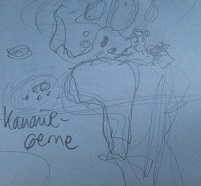 I do not have a picture of the wind, but I have a picture of a drawing Minna made, showing me where the Canary Islands are- a place with a very different kind of wind.
I do not have a picture of the wind, but I have a picture of a drawing Minna made, showing me where the Canary Islands are- a place with a very different kind of wind.
Interpretations of the Northern Lights through time and space
The Chuvash of Siberia believed it was their heaven god helping women in childbirth. East Greenland Inuits viewed the lights as children who died at birth. The Vikings thought aurorae were reflections from shields of the Valkyries, maidens who take dead warriors to Valhalla (heaven). Many Inuits' myths involve the dead playing ball with a walrus head. In Lapland, people were warned not to mock or whistle at aurorae or they may come down to harm them. Menominee Indians of Minnesota and Wisconsin thought the aurorae were torches of friendly northern giants used in spearfishing at night. The Mauri of New Zealand interpreted their glimpses of the aurora australis as reflected light from torches or campfires. A story from Finland claims that foxes made of fire lived in Lapland and flung sparks into the air with their tails. Farther south on the globe, in China, the monster responsible for auroral displays was a fire-breathing dragon. In Scotland, aurorae were called "merry dancers". If the "dancers" moved quickly, unsettled weather would be expected, but if the dancers moved slowly and gracefully, the weather forecast was favorable. The Lapps, or the Saami, a people who are a close relative 'race' of the Finns, who live in Lapland — that is, north of the Arctic Circle, in what officially are Northern Finland, Sweden, and Norway — traditionally believed that the lights were the energies of the souls of the departed. When the fires blazed in the skies, people were to behave solemnly, and children were admonished to quiet down and be respectful of the fires. The Lapps believed these fires to have magical effects; Lappish shaman drums often have runes depicting the fires to harness their energy. The lights were believed to have a mellowing effect on arguments, and the time of the fires was beneficial to conflict resolution. The Lapps also had a belief that if you whistled under the Northern Lights, you could summon them closer, and they could whisk you away with them. Urine and Dog Poo? Many Sami people would keep their families and children indoors during the display, or if they were outside they would cover up and try to hide from the rays. Some Alaskan Inuits were similarly scared, but had a more ´practical´approach. They would hide their children, and sometimes try to throw dog excrement and urine up in the air to make the lights go away. From https://rudhro.wordpress.com/2010/05/11/video-aurora-borealis-northern-lights-from-space/ (VIDEO OPLOAD OF ) My attempt to film the northern lights, Kilpisjarvi, 2/10 2016. no recording of northern light
































































































































